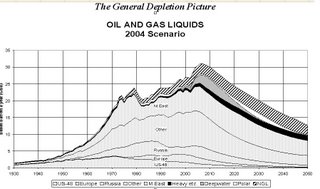Thursday, August 31, 2006
From "Death to the Incandescent" by Kelpie Wilson as posted on Truth Out:More than 90 percent of the energy consumed by a standard incandescent bulb is given off as heat, while only 10 percent is converted into light. That's a 10 percent efficiency of converting electricity to light.
By contrast, a compact fluorescent (CF) light bulb is from 35 percent to 66 percent efficient, depending on the design. The new LED lights are even more efficient. By one estimate, if every American household changed just three incandescent light bulbs to CF bulbs, we could eliminate 11 fossil-fuel-fired power plants.
If we can stop even a fraction of those new coal plants being built just by changing our light bulbs, shouldn't we do it already? And why haven't we banned the incandescent bulb yet? When we learned that leaded gas was poisoning kids' brains, we phased it out. Those bulbs are poisoning our kids' future.
But as long as the old-fashioned filament bulb sits there on the store shelves, clear or frosted, white or colored, cheap and abundant, there will always be some of us who will take them home and screw them in.
That's why we need to ban the bulb. It's the kind of political action we could be marching and protesting about. There is an organization working in Britain to ban the incandescent bulb, but I don't know of a serious effort in the US.



